
The Tranquil Wilderness of Great Swamp National Wildlife Refuge
Discover the serene beauty and diverse wildlife of Great Swamp National Wildlife Refuge, a tranquil sanctuary in New Jersey offering trails, bird watching, and educational programs.
The Great Swamp National Wildlife Refuge is a hidden gem nestled in New Jersey. This peaceful sanctuary spans over 7,700 acres and offers a unique escape from the hustle and bustle of city life. Visitors can explore a diverse landscape filled with woodlands, swamps, and grasslands that are home to a rich variety of wildlife. Bird watchers will be thrilled with the chance to spot over 200 species of birds, while nature enthusiasts can enjoy the sight of deer, turtles, and even the occasional fox. One of the highlights of the refuge is its extensive network of walking trails. These paths allow visitors to immerse themselves in the serene beauty of the swamp while observing the plants and animals that inhabit the area. The boardwalks and observation platforms provide perfect vantage points for photography and wildlife observation. The refuge also offers educational programs and guided tours that provide deeper insights into the ecosystem and conservation efforts. Families will find the Great Swamp a wonderful place for a day trip, with picnic areas available for a relaxing lunch surrounded by nature. Whether you're an avid hiker, a wildlife photographer, or simply looking for a peaceful retreat, the Great Swamp National Wildlife Refuge has something to offer.
Local tips in Great Swamp National Wildlife Refuge
- Wear comfortable walking shoes; the trails can be muddy, especially after rain.
- Bring binoculars for bird watching and a camera for capturing the stunning scenery.
- Check the refuge's website for information on guided tours and educational programs.
- Pack a picnic and enjoy a meal at one of the designated picnic areas.
- Visit early in the morning or late in the afternoon for the best wildlife viewing opportunities.
The Tranquil Wilderness of Great Swamp National Wildlife Refuge
The Great Swamp National Wildlife Refuge is a hidden gem nestled in New Jersey. This peaceful sanctuary spans over 7,700 acres and offers a unique escape from the hustle and bustle of city life. Visitors can explore a diverse landscape filled with woodlands, swamps, and grasslands that are home to a rich variety of wildlife. Bird watchers will be thrilled with the chance to spot over 200 species of birds, while nature enthusiasts can enjoy the sight of deer, turtles, and even the occasional fox. One of the highlights of the refuge is its extensive network of walking trails. These paths allow visitors to immerse themselves in the serene beauty of the swamp while observing the plants and animals that inhabit the area. The boardwalks and observation platforms provide perfect vantage points for photography and wildlife observation. The refuge also offers educational programs and guided tours that provide deeper insights into the ecosystem and conservation efforts. Families will find the Great Swamp a wonderful place for a day trip, with picnic areas available for a relaxing lunch surrounded by nature. Whether you're an avid hiker, a wildlife photographer, or simply looking for a peaceful retreat, the Great Swamp National Wildlife Refuge has something to offer.
When is the best time to go to Great Swamp National Wildlife Refuge?
Iconic landmarks you can’t miss
Great Swamp Wildlife Observation Center
Explore the Great Swamp Wildlife Observation Center, a stunning refuge in New Jersey ideal for hiking, wildlife observation, and connecting with nature.

Great Swamp National Wildlife Refuge Wilderness Area
Discover the diverse ecosystems and breathtaking landscapes of Great Swamp National Wildlife Refuge, a peaceful haven for nature lovers and wildlife enthusiasts.
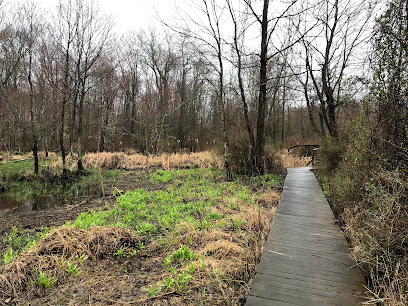
Great Swamp
Explore the serene beauty of Great Swamp, a stunning wetland in New Jersey, perfect for nature lovers and outdoor adventures.

Friends of Great Swamp Natl
Explore the serene beauty of Friends of Great Swamp National Wildlife Refuge, a vital sanctuary for diverse wildlife and nature enthusiasts in New Jersey.

Blue Bird Parking Lot - Great Swamp
Explore the beauty of nature at Blue Bird Parking Lot - Great Swamp, a tranquil park perfect for walks, bird watching, and outdoor relaxation in Basking Ridge, NJ.
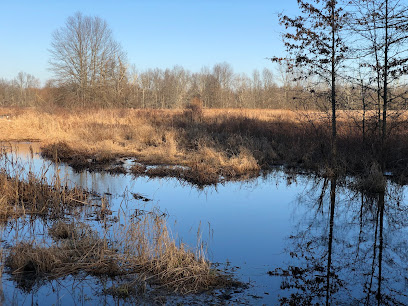
Great Swamp Lookout (Harding Township)
Discover the natural beauty of Great Swamp Lookout in Harding Township, a serene destination offering stunning views and abundant wildlife.

Unmissable attractions to see
MetLife Stadium
Experience the thrill of sports and live music at MetLife Stadium, New Jersey's premier venue for unforgettable events.

New York Aquarium
Explore the New York Aquarium: a captivating destination in Coney Island featuring diverse marine life, conservation efforts, and interactive exhibits for all ages.

Amazing Escape Room Green Brook
Discover thrill and teamwork at Amazing Escape Room Green Brook, a top-rated attraction for adventure seekers and puzzle enthusiasts.

South Mountain Reservation
Explore South Mountain Reservation - a picturesque park in New Jersey offering scenic trails, picnic areas, and a perfect escape into nature.

The LEGO® Store Fifth Avenue
Explore creativity and imagination at The LEGO® Store Fifth Avenue, a vibrant toy store in Manhattan offering exclusive sets and interactive experiences.

Union Square Greenmarket
Discover fresh produce, artisanal goods, and the vibrant community at Union Square Greenmarket in the heart of Manhattan, New York City.

Neil Simon Theatre
Discover the enchanting world of Broadway at Neil Simon Theatre, where captivating performances and rich history come together in the heart of Manhattan.

O'Hara's Restaurant and Pub
Experience authentic American cuisine and vibrant nightlife at O'Hara's Restaurant and Pub in Manhattan, a must-visit for every NYC traveler.

Statue of Liberty Vista Point
Discover stunning views at the Statue of Liberty Vista Point, a must-see scenic spot in Battery Park, New York City, perfect for capturing unforgettable moments.

Color Factory NYC
Experience an immersive adventure at Color Factory NYC, where creativity and color collide in a captivating art-filled journey perfect for all ages.

Moulin Rouge! The Musical
Discover the enchanting world of Moulin Rouge! The Musical in NYC, where love, music, and vibrant performances come to life.

Brooklyn Children's Museum
Explore, learn, and play at the Brooklyn Children's Museum, where interactive exhibits inspire creativity and curiosity in young minds.

Watchung Reservation
Explore the lush landscapes and rich history of Watchung Reservation, a beautiful park perfect for outdoor adventures and family outings.

INTER_IAM
Discover creativity at INTER_IAM, a unique art center in Manhattan offering interactive exhibits, workshops, and family-friendly activities for all ages.

Classic Harbor Line
Discover New York City from the water with Classic Harbor Line's luxurious boat tours and yacht rentals, offering stunning views and unforgettable experiences.

Essential places to dine
Rainforest Cafe
Experience the thrill of dining in the jungle at Rainforest Cafe in Edison, NJ—where adventure meets delicious American cuisine.
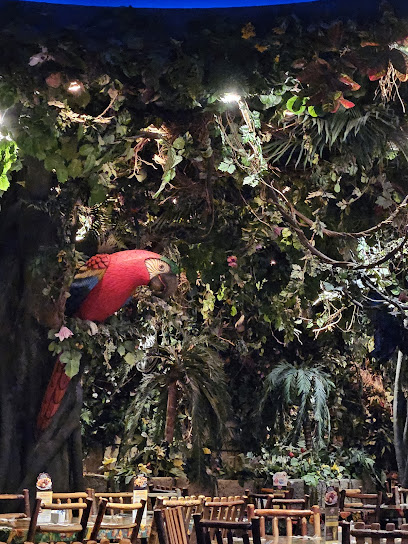
Great Swamp National Wildlife Refuge
Discover the captivating wildlife and serene landscapes at Great Swamp National Wildlife Refuge—an ideal retreat for nature lovers.

Great Swamp Wildlife Observation Center
Explore stunning trails and diverse wildlife at Great Swamp Wildlife Observation Center – New Jersey's premier natural sanctuary.

Great Swamp National Wildlife Refuge Wilderness Area
Explore the Great Swamp National Wildlife Refuge: A haven for wildlife enthusiasts with breathtaking landscapes in New Jersey.

Friends of Great Swamp Natl
Explore the serene beauty of Friends of Great Swamp National Wildlife Refuge – a natural sanctuary teeming with diverse wildlife and stunning landscapes.

Markets, malls and hidden boutiques
Westfield Garden State Plaza
Discover shopping bliss at Westfield Garden State Plaza, home to top brands, diverse dining, and entertainment in Paramus, NJ.

Willowbrook
Explore Willowbrook Mall in Wayne, NJ, your ultimate shopping destination with diverse stores, delightful dining, and engaging events for everyone.

Woodbridge Center
Discover a vibrant shopping experience at Woodbridge Center, New Jersey's premier destination for fashion, dining, and entertainment.

MyUnique Thrift
Uncover vintage clothing and unique treasures at MyUnique Thrift in Paterson, NJ - a thrift store that embodies affordability and sustainability.

Great Swamp Greenhouses
Discover the serene beauty of Great Swamp Greenhouses, a stunning garden center in Gillette, NJ, ideal for plant lovers and gardening enthusiasts.

Inspirations
Explore Inspirations Thrift Store in Rahway, NJ for unique fashion finds and sustainable shopping experiences.

Inspirations Stores
Explore a treasure trove of second-hand clothing and unique finds at Inspirations Stores in Union, NJ, where sustainable shopping meets style.

New Jersey Audubon's Scherman Hoffman Wildlife Sanctuary
Experience the natural beauty and educational programs at New Jersey Audubon's Scherman Hoffman Wildlife Sanctuary, the perfect destination for nature lovers.
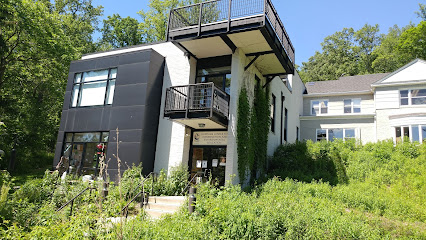
INspirations
Explore INspirations Thrift Store in Linden, NJ, for unique clothing and sustainable shopping with a community vibe.

Great Swamp Wildlife Observation Center
Explore the beauty of nature at the Great Swamp Wildlife Observation Center, a prime spot for hiking, birdwatching, and wildlife observation in New Jersey.
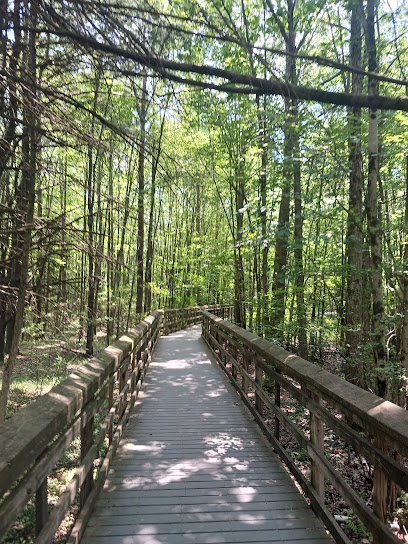
Great Swamp National Wildlife Refuge Wilderness Area
Discover the Great Swamp National Wildlife Refuge: A natural paradise teeming with wildlife and stunning landscapes in New Jersey.

Sustainable Haus Mercantile
Explore Sustainable Haus Mercantile in Summit, NJ, for unique, eco-friendly home goods that promote sustainable living and stylish design.

Regalo Gift Shop
Explore Regalo Gift Shop in Morris Plains for unique gifts and local treasures that capture the spirit of New Jersey's charming artistry.
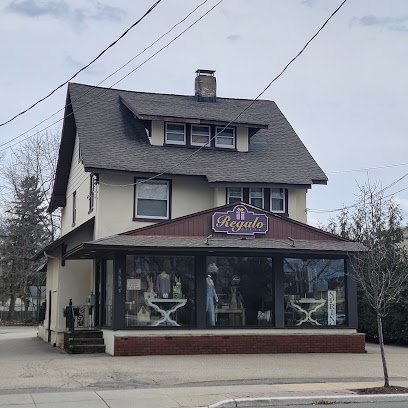
Sisters
Explore Sisters Boutique in Denville, NJ for unique fashion finds and local charm that enhance your shopping experience.

Pretty Handy Gift Shop and Makerspace
Experience the charm of creativity at Pretty Handy Gift Shop and Makerspace, where unique crafts and DIY workshops await in Nutley, NJ.

Essential bars & hidden hideouts
The Stirling Hotel
Discover the delightful flavors of grill cuisine at The Stirling Hotel, a charming dining destination in Stirling, New Jersey.

Grain House
Experience the best of American cuisine at Grain House, a rustic gem in Basking Ridge, perfect for dining and special events.

Vintage Tavern
Discover Vintage Tavern in Gillette, NJ: a cozy American restaurant offering hearty dishes and a friendly atmosphere perfect for your culinary adventure.

Grasshopper off the Green
Discover the lively atmosphere and delicious cuisine at Grasshopper off the Green, Morristown's favorite Irish pub and live music venue.

Jockey Hollow Bar & Kitchen
Experience the fusion of American and Italian cuisine at Jockey Hollow Bar & Kitchen, a premier dining destination in Morristown, NJ.
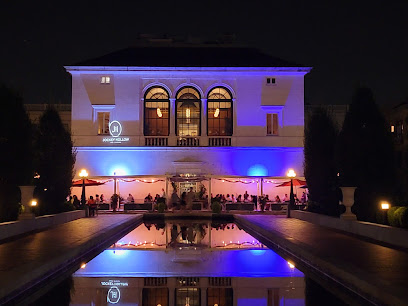
Miller's Ale House
Experience the flavors of American cuisine at Miller's Ale House, a lively sports bar and grill in Watchung, NJ, perfect for food lovers and sports fans.

54 Main Bar & Grille
Discover the vibrant atmosphere of 54 Main Bar & Grille, where delicious American cuisine meets live music and nightlife in Madison, NJ.

Iron Bar
Experience the lively ambiance of Iron Bar in Morristown, where delicious food meets an extensive drink selection in a vibrant setting.

The Laundromat
Experience the vibrant atmosphere of The Laundromat, Morristown's unique bar with live music and eclectic decor, perfect for unwinding after a day of exploration.

Horseshoe Tavern
Discover the Horseshoe Tavern in Morristown, NJ: a lively bar and restaurant offering American cuisine, live music, and sports entertainment for all.

26 Tavern
Indulge in exquisite American cuisine at 26 Tavern, a fine dining gem in Basking Ridge, NJ, perfect for memorable dining experiences.
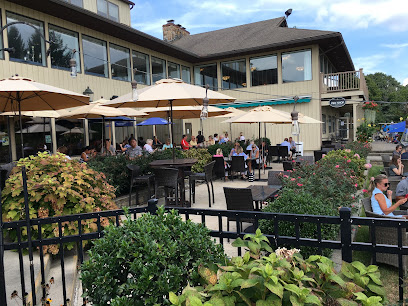
Revolution, Gastropub
Experience the vibrant culinary scene at Revolution Gastropub in Morristown, NJ, where innovative dishes and a lively bar atmosphere await.

The Claremont Tavern
Discover the heart of American cuisine at The Claremont Tavern, where every meal is a celebration of flavor and hospitality.

Minuteman Whiskey Bar & BBQ
Experience the best of barbecue and whiskey at Minuteman Whiskey Bar & BBQ in Morristown, NJ, where flavor meets warmth in every bite.

The Station
Experience the best of local flavors at The Station, a cozy grill and pub in Bernardsville, perfect for food lovers and social gatherings.

Local Phrases about Great Swamp National Wildlife Refuge
-
- HelloHey y'all
[Hey y'all] - GoodbyeSee ya later
[See ya later] - YesYup
[Yup] - NoNah
[Nah] - Please/You're welcomePlease/No problem
[Please/No problem] - Thank youThanks a bunch
[Thanks a bunch] - Excuse me/SorryPardon me/My bad
[Pardon me/My bad] - How are you?How ya doin'?
[How ya doin'?] - Fine. And you?Good. And you?
[Good. And you?] - Do you speak English?Ya speak English?
[Ya speak English?] - I don't understandI ain't gettin' ya
[I ain't gettin' ya]
- HelloHey y'all
-
- I'd like to see the menu, pleaseCan I check out the menu, please
[Can I check out the menu, please] - I don't eat meatI don't eat no meat
[I don't eat no meat] - Cheers!Cheers!
[Cheers!] - I would like to pay, pleaseI wanna settle up, please
[I wanna settle up, please]
- I'd like to see the menu, pleaseCan I check out the menu, please
-
- Help!Help!
[Help!] - Go away!Go away!
[Go away!] - Call the Police!Call the Cops!
[Call the Cops!] - Call a doctor!Call a doc!
[Call a doc!] - I'm lostI'm lost
[I'm lost] - I'm illI'm feelin' sick
[I'm feelin' sick]
- Help!Help!
-
- I'd like to buy...I wanna buy...
[I wanna buy...] - I'm just lookingJust browsin'
[Just browsin'] - How much is it?How much does it cost?
[How much does it cost?] - That's too expensiveThat's too pricey
[That's too pricey] - Can you lower the price?Can ya bring down the price?
[Can ya bring down the price?]
- I'd like to buy...I wanna buy...
-
- What time is it?What time is it?
[What time is it?] - It's one o'clockIt's one
[It's one] - Half past (10)Half past ten
[Half past ten] - MorningMorning
[Morning] - AfternoonAfternoon
[Afternoon] - EveningEvenin'
[Evenin'] - YesterdayYesterday
[Yesterday] - TodayToday
[Today] - TomorrowTomorrow
[Tomorrow] - 1One
[One] - 2Two
[Two] - 3Three
[Three] - 4Four
[Four] - 5Five
[Five] - 6Six
[Six] - 7Seven
[Seven] - 8Eight
[Eight] - 9Nine
[Nine] - 10Ten
[Ten]
- What time is it?What time is it?
-
- Where's a/the...?Where's a/the...?
[Where's a/the...?] - What's the address?What's the address?
[What's the address?] - Can you show me (on the map)?Can you show me (on the map)?
[Can you show me (on the map)?] - When's the next (bus)?When's the next (bus)?
[When's the next (bus)?] - A ticket (to ....)A ticket (to ....)
[A ticket (to ....)]
- Where's a/the...?Where's a/the...?
History of Great Swamp National Wildlife Refuge
-
The Great Swamp area was originally inhabited by the Lenape Native American tribe before European settlers arrived in the early 1700s. The region's rich natural resources, including timber and fertile soil, attracted colonial farmers. By the mid-18th century, the area had become a patchwork of small farms and settlements.
-
During the American Revolutionary War, the Great Swamp served as a strategic hideout for General George Washington and his troops. The swamp's dense vegetation and difficult terrain provided an ideal defensive position against British forces. Local lore even suggests that the swamp was used to conceal munitions and supplies.
-
In the 19th century, the Great Swamp area saw a shift towards industrialization. Mills and small factories began to dot the landscape, taking advantage of the natural waterways for power. Despite this, agriculture remained a dominant activity, with many local farmers continuing to work the land for crops and livestock.
-
By the mid-20th century, urban development threatened the Great Swamp. In 1959, plans were unveiled to build a major airport in the heart of the swamp. This sparked a significant grassroots movement led by local conservationists and residents who recognized the ecological importance of the area. Their efforts culminated in 1960 with the establishment of the Great Swamp National Wildlife Refuge, preserving over 7,600 acres of wetlands and forest.
-
Since its establishment, the Great Swamp National Wildlife Refuge has become a sanctuary for a diverse range of flora and fauna. It is home to over 200 species of birds, making it a critical habitat for migratory species. The refuge also plays a vital role in water purification and flood control in the region, showcasing the ecological importance of wetland preservation.
-
Today, the Great Swamp National Wildlife Refuge is not only a haven for wildlife but also a center for environmental education and cultural heritage. It offers a range of programs and activities aimed at fostering a deeper understanding of the natural world. Trails, boardwalks, and observation points are designed to educate visitors about the history and ecology of the swamp, making it a significant cultural asset for New Jersey and beyond.
Great Swamp National Wildlife Refuge Essentials
-
Great Swamp National Wildlife Refuge is located in Morris County, New Jersey. The nearest major airport is Newark Liberty International Airport (EWR), approximately 30 miles away. From the airport, you can rent a car or take a taxi for a direct route to the refuge. Alternatively, the NJ Transit train services run from New York City to the nearby towns of Morristown and Madison, from where you can take a short taxi or rideshare service to the refuge.
-
While public transportation options are limited directly to the refuge, having a car is the most convenient way to explore Great Swamp National Wildlife Refuge. Local car rental services are available at the airport and in nearby towns. If you prefer not to drive, rideshare services like Uber and Lyft are also operational in the area. Biking is another great option, and there are bike racks available at some trailheads.
-
The official currency is the United States Dollar (USD). Credit and debit cards are widely accepted, but it is advisable to carry some cash, especially for small purchases at local stores or farmer's markets. ATMs are available in nearby towns like Morristown and Madison.
-
Great Swamp National Wildlife Refuge is generally a very safe area for tourists. However, it is always best to stay vigilant and aware of your surroundings. Avoid leaving valuables in your car and always lock your vehicle. There are no high-crime areas within the refuge or its immediate surroundings, but general precautions should be taken as in any public space.
-
In case of an emergency, dial 911 for immediate assistance. The nearest hospitals are Morristown Medical Center and Overlook Medical Center in Summit. For minor injuries, first aid kits are available at the visitor centers. It's advisable to carry a basic first aid kit if you plan on hiking or exploring the trails extensively.
-
Fashion: Do wear comfortable, weather-appropriate clothing and sturdy shoes suitable for hiking. Don’t wear overly bright colors as they can disturb the wildlife. Religion: The area is secular, so there are no specific religious customs to follow. Public Transport: Since public transport isn't a primary option here, focus on car rentals and rideshares. Greetings: A simple handshake or a friendly nod suffices for greetings. Eating & Drinking: Do bring your own snacks and water, as there are limited facilities within the refuge. Don’t litter; always carry out what you carry in.
-
To experience Great Swamp National Wildlife Refuge like a local, visit during the early morning or late afternoon when wildlife is most active. Bring binoculars for bird watching and take advantage of the guided tours offered by the Friends of Great Swamp. Participate in seasonal events like bird counts or educational programs to deepen your understanding of the area's ecology. Always check the weather forecast and trail conditions before heading out.
Nearby Cities to Great Swamp National Wildlife Refuge
-
Things To Do in Jersey City
-
Things To Do in Hoboken
-
Things To Do in New York City
-
Things To Do in Lambertville
-
Things To Do in Red Bank
-
Things To Do in Yonkers
-
Things To Do in Trenton
-
Things To Do in Asbury Park
-
Things To Do in White Plains
-
Things To Do in Allentown
-
Things To Do in Greenwich
-
Things To Do in Stamford
-
Things To Do in Seaside Heights
-
Things To Do in Philadelphia
-
Things To Do in Norwalk







